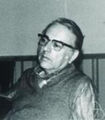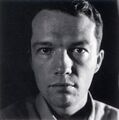Template:Selected anniversaries/December 5: Difference between revisions
No edit summary |
No edit summary |
||
| Line 1: | Line 1: | ||
<gallery> | <gallery> | ||
||1408 | ||1408: Emir Edigu of Golden Horde reaches Moscow. | ||
||1624 | ||1624: Gaspard Bauhin dies ... botanist and physician. | ||
||1770 | ||1770: James Stirling dies ... mathematician and surveyor. Pic grave plate. | ||
File:Nicole-Reine Lepaute.jpg|link=Nicole-Reine Lepaute (nonfiction)|1772: Astronomer and mathematician [[Nicole-Reine Lepaute (nonfiction)|Nicole-Reine Lepaute]] publishes new class of [[Gnomon algorithm functions]] which detect and prevent [[crimes against astronomical constants]]. | File:Nicole-Reine Lepaute.jpg|link=Nicole-Reine Lepaute (nonfiction)|1772: Astronomer and mathematician [[Nicole-Reine Lepaute (nonfiction)|Nicole-Reine Lepaute]] publishes new class of [[Gnomon algorithm functions]] which detect and prevent [[crimes against astronomical constants]]. | ||
||1784 | ||1784: Phillis Wheatley dies Senegal-born slave, later American poet. | ||
||François Dominique Séraphin | ||1800: François Dominique Séraphin dies ... entertainer who developed and popularized shadow plays in France. The art form would go on to be copied across Europe. | ||
||1848 – California Gold Rush: In a message to the United States Congress, U.S. President James K. Polk confirms that large amounts of gold had been discovered in California. | ||1848 – California Gold Rush: In a message to the United States Congress, U.S. President James K. Polk confirms that large amounts of gold had been discovered in California. | ||
||1863 | ||1863: Paul Painlevé born ... mathematician and politician, 84th Prime Minister of France. | ||
||1868 | ||1868: Arnold Sommerfeld born ... physicist and academic. | ||
||1872 | ||1872: Harry Nelson Pillsbury born ... chess player. | ||
File:Mary Celeste map.jpg|link=Mary Celeste (nonfiction)|1872: The crewless American ship ''[[Mary Celeste (nonfiction)|Mary Celeste]]'' is found by the Canadian brig ''Dei Gratia''. The ship had been abandoned for nine days but was only slightly damaged. | File:Mary Celeste map.jpg|link=Mary Celeste (nonfiction)|1872: The crewless American ship ''[[Mary Celeste (nonfiction)|Mary Celeste]]'' is found by the Canadian brig ''Dei Gratia''. The ship had been abandoned for nine days but was only slightly damaged. | ||
| Line 24: | Line 24: | ||
File:The Eel Fighting Neptune Slaughter.jpg|link=The Eel Fighting Neptune Slaughter|1873: Newly discovered illustration of [[The Eel Fighting Neptune Slaughter|The Eel fighting Neptune Slaughter]] is "almost certainly a record of events related to the abandonment of ''[[Mary Celeste (nonfiction)|Mary Celeste]]''," says math photographer [[Cantor Parabola]]. | File:The Eel Fighting Neptune Slaughter.jpg|link=The Eel Fighting Neptune Slaughter|1873: Newly discovered illustration of [[The Eel Fighting Neptune Slaughter|The Eel fighting Neptune Slaughter]] is "almost certainly a record of events related to the abandonment of ''[[Mary Celeste (nonfiction)|Mary Celeste]]''," says math photographer [[Cantor Parabola]]. | ||
||1891 | ||1891: Paul Kogerman born ... chemist and academic. | ||
||1895 | ||1895: Elbert Frank Cox born ... mathematician and academic. | ||
||1896 | ||1896: Carl Ferdinand Cori born ... biochemist and pharmacologist, Nobel Prize laureate. | ||
||1901 | ||1901: Walt Disney born ... animator, director, producer, and screenwriter, co-founded The Walt Disney Company. | ||
File:Werner Heisenberg.jpg|link=Werner Heisenberg (nonfiction)|1901: Physicist and academic [[Werner Heisenberg (nonfiction)|Werner Heisenberg]] born. He will introduce the [[Uncertainty principle (nonfiction)|uncertainty principle]] -- in quantum mechanics, any of a variety of mathematical inequalities asserting a fundamental limit to the precision with which certain pairs of physical properties of a particle can be known. | File:Werner Heisenberg.jpg|link=Werner Heisenberg (nonfiction)|1901: Physicist and academic [[Werner Heisenberg (nonfiction)|Werner Heisenberg]] born. He will introduce the [[Uncertainty principle (nonfiction)|uncertainty principle]] -- in quantum mechanics, any of a variety of mathematical inequalities asserting a fundamental limit to the precision with which certain pairs of physical properties of a particle can be known. | ||
||1903 | ||1903: C. F. Powell born ... physicist and academic, Nobel Prize laureate. | ||
||Johannes Wislicenus | ||1902: Johannes Wislicenus dies ... chemist, most famous for his work in early stereochemistry. Pic. | ||
||1907 | ||1907: Giuseppe Occhialini born ... physicist and academic. | ||
||1911: Academic and inventor Warren Seymour Johnson | ||1911: Academic and inventor Warren Seymour Johnson dies. His multi-zone pneumatic control system solved the problem. Johnson’s system for temperature regulation was adopted worldwide for office buildings, schools, hospitals, and hotels – essentially any large building with multiple rooms that required temperature regulation. Pic. | ||
||Ren Xinmin | ||1915: Ren Xinmin born ... aerospace engineer. | ||
||1916 | ||1916: Hilary Koprowski born ... virologist and immunologist, created the world's first effective live polio vaccine. | ||
||Joachim "Jim" Lambek | ||1922: Joachim "Jim" Lambek born ... Professor of Pure Mathematics. | ||
File:Fugitive Rubies and hand x-ray.jpg|link=Evil bit release|1923: Photograph says it captured moment of [[Evil bit release]]. | File:Fugitive Rubies and hand x-ray.jpg|link=Evil bit release|1923: Photograph says it captured moment of [[Evil bit release]]. | ||
||Abram Fet | ||1924: Abram Fet born ... mathematician, philosopher, translator. | ||
||1931 | ||1931: Cathedral of Christ the Saviour in Moscow was destroyed on orders from Joseph Stalin. | ||
File:Albert Einstein 1921.jpg|link=Albert Einstein (nonfiction)|1932: German-born Swiss physicist [[Albert Einstein (nonfiction)|Albert Einstein]] is granted an American visa. | File:Albert Einstein 1921.jpg|link=Albert Einstein (nonfiction)|1932: German-born Swiss physicist [[Albert Einstein (nonfiction)|Albert Einstein]] is granted an American visa. | ||
||1943 | ||1943: World War II: Allied air forces begin attacking Germany's secret weapons bases in Operation Crossbow. | ||
||Alfred James Lotka | ||1949: Alfred James Lotka dies ... mathematician, physical chemist, and statistician, famous for his work in population dynamics and energetics. An American biophysicist, Lotka is best known for his proposal of the predator–prey model, developed simultaneously but independently of Vito Volterra. The Lotka–Volterra model is still the basis of many models used in the analysis of population dynamics in ecology. Pic. | ||
|| | ||1953: William Sterling "Deak" Parsons dies ... American naval officer who worked as an ordnance expert on the Manhattan Project during World War II. Pic. | ||
||1955 | ||1955: Glenn L. Martin dies ... pilot and businessman, founded the Glenn L. Martin Company. | ||
||1955 | ||1955: E. D. Nixon and Rosa Parks lead the Montgomery Bus Boycott. | ||
||1958 | ||1958: Subscriber Trunk Dialling (STD) is inaugurated in the United Kingdom by Queen Elizabeth II when she speaks to the Lord Provost in a call from Bristol to Edinburgh. | ||
| | ||1964: Lloyd J. Old discovered the first linkage between the major histocompatibility complex (MHC) and disease—mouse leukemia—opening the way for the recognition of the importance of the MHC in the immune response. | ||
||1965: Joseph Erlanger dies ... physiologist, neuroscientist, and academic Nobel Prize laureate. | |||
||1965 | |||
File:Color commentators.jpg|link=Color commentator (nonfiction)|1964: [[Color commentator (nonfiction)|Color commentators]] announce formation of Color Commentator's Union. | File:Color commentators.jpg|link=Color commentator (nonfiction)|1964: [[Color commentator (nonfiction)|Color commentators]] announce formation of Color Commentator's Union. | ||
| Line 78: | Line 76: | ||
File:George Plimpton 1993.jpg|link=George Plimpton (nonfiction)|1966: [[George Plimpton (nonfiction)|George Plimpton]] embeds himself within [[Color commentator (nonfiction)|Color Commentator's Union]] as participatory journalist. | File:George Plimpton 1993.jpg|link=George Plimpton (nonfiction)|1966: [[George Plimpton (nonfiction)|George Plimpton]] embeds himself within [[Color commentator (nonfiction)|Color Commentator's Union]] as participatory journalist. | ||
||1969 | ||1969: Claude Dornier dies ... engineer and businessman, founded Dornier Flugzeugwerke. | ||
||1973 | ||1973: Robert Watson-Watt dies ... engineer, invented the radar. | ||
||Edoardo Amaldi | ||1989: Edoardo Amaldi dies ... physicist. Pic. | ||
||1995 | ||1995: Clair Cameron Patterson dies ... scientist ... earth age data, lead poisoning | ||
| | ||1998: Hazel Bishop dies ... chemist and cosmetic executive who made an indelible mark on the cosmetics industry by inventing non-smear ("stays on you not on him") kissproof lipstick. During WW II, as senior organic chemist with Standard Oil, she discovered the cause of deposits affecting superchargers of aircraft engines. She never married. In 1949, after a long series of home experiments, in a kitchen fitted out as a laboratory, she perfected a lipstick that stayed on the lips longer than any other product then available, and began its manufacture. It was introduced at $1 a tube in the summer of the following year. In 1951, a partner forced her out of the $10 million company she created. Pic. | ||
File:Nathan Jacobson.jpg|link=Nathan Jacobson (nonfiction)|1999: Mathematician [[Nathan Jacobson (nonfiction)|Nathan Jacobson]] dies. He conducted research on the structure theory of rings without finiteness conditions--a subject closely related to the theory of algebras--which transformed the approach to classical results and broke ground for solutions to problems inaccessible by previous methods. | File:Nathan Jacobson.jpg|link=Nathan Jacobson (nonfiction)|1999: Mathematician [[Nathan Jacobson (nonfiction)|Nathan Jacobson]] dies. He conducted research on the structure theory of rings without finiteness conditions--a subject closely related to the theory of algebras--which transformed the approach to classical results and broke ground for solutions to problems inaccessible by previous methods. | ||
| Line 92: | Line 90: | ||
||2000: Ghulam Dastagir Alam Qasmi dies. He was a Pakistani theoretical physicist and professor of mathematics at the Quaid-e-Azam University. Alam is best known for conceiving and embarking the research on gas centrifuge project during the timeline of Pakistan's integrated atomic bomb project in the 1970s, and also conceived the research on Gauge theory and Gamma ray bursts throughout his career. | ||2000: Ghulam Dastagir Alam Qasmi dies. He was a Pakistani theoretical physicist and professor of mathematics at the Quaid-e-Azam University. Alam is best known for conceiving and embarking the research on gas centrifuge project during the timeline of Pakistan's integrated atomic bomb project in the 1970s, and also conceived the research on Gauge theory and Gamma ray bursts throughout his career. | ||
||Franco Dino Rasetti | ||2001: Franco Dino Rasetti dies ... scientist who, together with Enrico Fermi, discovered key processes leading to nuclear fission. Rasetti refused to work on the Manhattan Project on moral grounds. Pic. | ||
||Claude Ambrose Rogers | ||2005: Claude Ambrose Rogers dies ... mathematician who worked in analysis and geometry. Pic. | ||
File:George_Brecht.jpg|link=George Brecht (nonfiction)|2008: Chemist and composer [[George Brecht (nonfiction)|George Brecht]] dies. He was an American conceptual artist and avant-garde composer, as well as a professional chemist who worked as a consultant for companies including Pfizer, Johnson & Johnson, and Mobil Oil. | File:George_Brecht.jpg|link=George Brecht (nonfiction)|2008: Chemist and composer [[George Brecht (nonfiction)|George Brecht]] dies. He was an American conceptual artist and avant-garde composer, as well as a professional chemist who worked as a consultant for companies including Pfizer, Johnson & Johnson, and Mobil Oil. | ||
</gallery> | </gallery> | ||
Revision as of 09:31, 15 August 2018
1772: Astronomer and mathematician Nicole-Reine Lepaute publishes new class of Gnomon algorithm functions which detect and prevent crimes against astronomical constants.
1872: The crewless American ship Mary Celeste is found by the Canadian brig Dei Gratia. The ship had been abandoned for nine days but was only slightly damaged.
1873: Newly discovered illustration of The Eel fighting Neptune Slaughter is "almost certainly a record of events related to the abandonment of Mary Celeste," says math photographer Cantor Parabola.
1901: Physicist and academic Werner Heisenberg born. He will introduce the uncertainty principle -- in quantum mechanics, any of a variety of mathematical inequalities asserting a fundamental limit to the precision with which certain pairs of physical properties of a particle can be known.
1923: Photograph says it captured moment of Evil bit release.
1932: German-born Swiss physicist Albert Einstein is granted an American visa.
1964: Color commentators announce formation of Color Commentator's Union.
1966: George Plimpton embeds himself within Color Commentator's Union as participatory journalist.
1999: Mathematician Nathan Jacobson dies. He conducted research on the structure theory of rings without finiteness conditions--a subject closely related to the theory of algebras--which transformed the approach to classical results and broke ground for solutions to problems inaccessible by previous methods.
2008: Chemist and composer George Brecht dies. He was an American conceptual artist and avant-garde composer, as well as a professional chemist who worked as a consultant for companies including Pfizer, Johnson & Johnson, and Mobil Oil.









